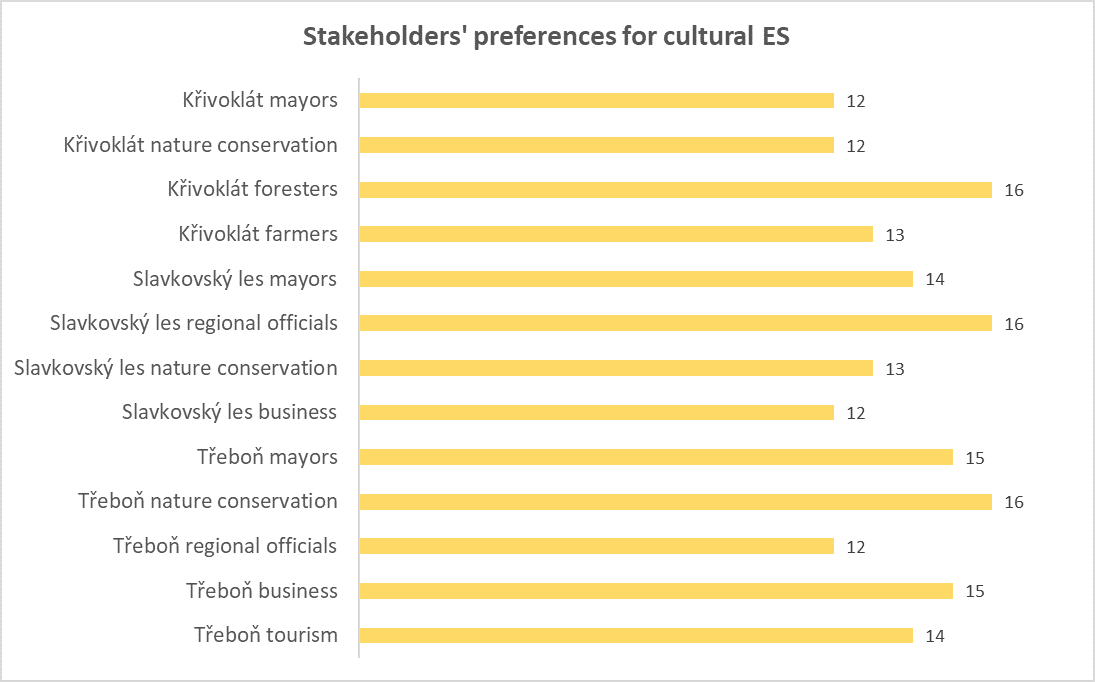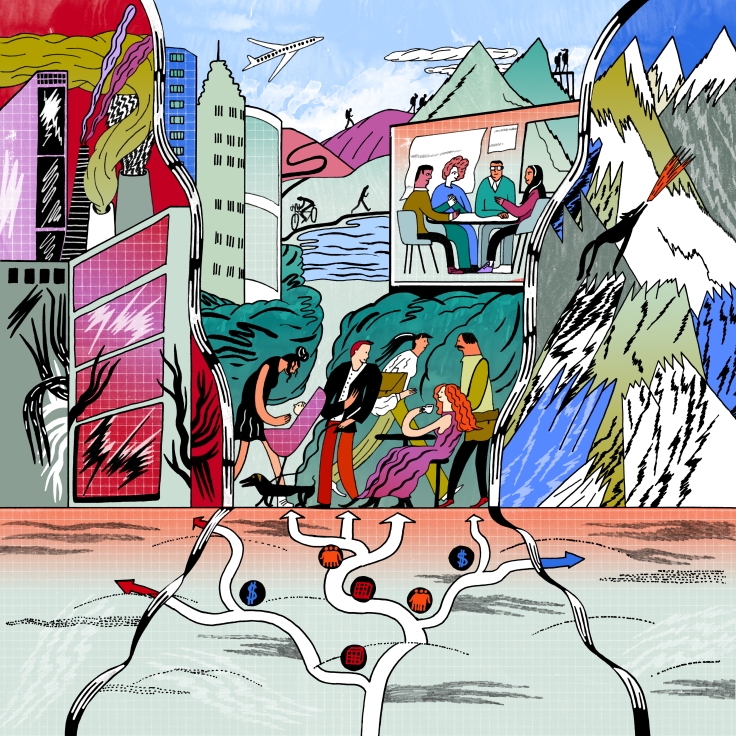In May and June this year, as part of the IP LIFE One Nature project, the third series of participatory seminars was held in selected Natura 2000 locations (Třeboňsko, Křivoklátsko, Slavkovský les). One of the objectives of this series of workshops was to find out how different groups of actors (mayors, officials, agricultural and forestry workers, environmentalists, business and tourism representatives) perceive the ecosystem services that nature provides in the areas. The workshops produced a range of interesting information and results. We will try to summarise some of these in this blog.
Which ecosystem services are most valued by stakeholders?
One of the key questions of the workshop was to find out which ecosystem services (ES) in the area are most preferred by each stakeholder group. Workshop participants were asked how important ecosystem services in the locations were to them in terms of their profession. The participants rated each service separately on a five-point scale from “not at all important to my profession” to “very important to my profession“.
The results show (Figure 1) that the most preferred ecosystem service in all three locations is Regulation of water quantity and runoff, closely followed by Maintenance of future options. These two services were given the value of 4 (“very important for my profession“) by a total of 9 out of the 13 stakeholder groups.
These two services were closely followed by Learning and inspiration, Regulating water quality and Habitat creation and maintenance. The two remaining cultural services (Physical and psychological experiences and Supporting identities) followed very closely.

It can be concluded that water regulating services in the landscape and all four cultural services, together with Habitat creation and maintenance, dominated the ranking in terms of preference.
The other regulating ecosystem services (regulation of hazards, detrimental organisms, climate, air quality, pollination) were also ranked relatively high (on the scale, participants gave them the average value of 3.4, i.e. neutral to important). The results show that almost all the stakeholder groups across all locations have increased interest in regulating services.
Are cultural services particularly favoured by some (selected) stakeholder groups?
For cultural ecosystem services, the vast majority of the the stakeholders at all locations assigned high values (12-16, see Figure 2). These services appeared to be important–very important to all the stakeholders.
This contradicts the assumption that the selected cultural services (e.g. Physical and psychological experiences and Supporting identities) would only be very important for the selected groups of stakeholders, e.g. tourism representatives and mayors. Cultural services are preferred by all groups in all three locations, regardless of profession. Similar findings (high preference for cultural services) are reported in literature by authors from other European countries (e.g. Spain, Germany, France).

In contrast, material ecosystem services generally received the fewest preference votes (most often rated as rather unimportant–neutral) and thus the fewest points in the final total (marked in blue, at the bottom of the table, Figure 1). Nevertheless, there are still some groups of stakeholders who prefer them. Material services (Food and feed, Materials, Energy) were considered important–very important by groups of foresters and farmers, some of the business representatives, and mayors. Very low preferences for material services were reported by conservationists, regional officials and tourism representatives.
How do the different professional groups perceive their influence on the provision of certain services in the area, and what is the specific form of this influence?
Participants were also asked if they had opportunities to influence ecosystem services in the area in any way through their profession. If they answered yes, they were asked to rate their influence on a scale of 1-4 and also to indicate how specifically they influenced the service.
Cultural services, together with the regulating service of Habitat creation and maintenance, were identified as the services over which the stakeholders in the areas have the most influence. In contrast, material services were identified as the services over which the stakeholders had the least influence.
Nature conservation stakeholders in all three locations rated their influence on the provision of services in the area on a high on the scale (significant–very significant influence); foresters and farmers from Křivoklátsko also reported significant influence on the provision of services in the area (Figure 3).
In contrast, mayors, business representatives and tourism representatives rated their influence on services in the area as rather low (low–moderate influence).

The most frequently mentioned way of influencing the provision of ES in the area was through the decision-making process (this was mainly mentioned by nature conservation representatives and regional officials). Other ways in which the stakeholders can influence ES in the area were: spatial planning (again mainly mentioned by nature conservation representatives, regional officials and also mayors), direct action in the landscape (this way of influencing ES was mentioned by groups of business representatives, farmers, foresters and mayors, and also by some nature conservation representatives). Last but not least, communication with the public, awareness-raising and educational activities were also mentioned – these ways were mainly mentioned by tourism representatives and mayors.
Česká verze příspěvku je dostupná na stránkách projektu zde.













